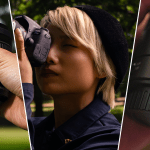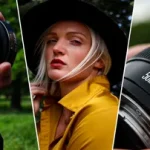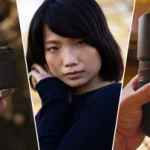Are you getting your first Canon camera but unsure what the best Canon lenses for beginners might be? Are you confused by all the options out there? This list will cover three lenses: the Canon EF 50mm f1.4, the Canon EF 50mm f1.8, and the Canon EF-S 24mm f2.8. This article will give you a brief overview of each.

Canon EF 50mm f1.4
The Canon EF 50mm f1.4 USM lens, a staple in photography, presents a fascinating conundrum for photographers. With its lineage tracing back to 1971, this lens is a testament to Canon’s enduring design philosophy. Despite its age and various new versions of the year, the EF 50mm f1.4 USM remains a topic of debate: is it a lens that photographers will cherish or one they might overlook?
Sharpness
In a realm where prime lenses are praised for their sharpness over zoom lenses, the EF 50mm f1.4 USM holds its own. Its fixed focal length of 50mm on a full-frame camera, paired with a maximum aperture of f1.4, offers photographers a standard view akin to the human eye’s perception. The lens becomes even more versatile when used on a cropped sensor, effectively transforming into an 80mm lens, ideal for portraits and close-up shots. This is because Canon has a crop factor of x1.6. Put simply, 50mm x 1.6 = 80mm
Crafted with high-quality polycarbonate plastic and featuring an all-electronic EF metal mount, the lens is lightweight yet solid. The design includes a recessed front glass, potentially reducing the need for a UV filter. However, a variable ND filter is recommended for protection and creative control, especially in video shooting. I will talk a lot more about this in the full review.
Low Light
The lens’s maximum aperture of f1.4 is a boon for photographers, especially in low-light conditions. This wide aperture allows a significant amount of light, making it preferable over its f1.8 counterpart, which we will discuss in a minute. The shallow depth of field at this aperture brings a distinctive character to portraits, with a focus on the subject’s eyes, creating a flattering blur for the rest of the image.
Autofocus
The lens’s autofocus system, powered by an ultra-sonic motor, is noteworthy, though it has shown signs of wear over extended use. Some photographers report a decline in the smoothness and quietness of the autofocus, a factor to consider for those intending to use the lens for video.
The Canon EF 50mm f1.4 USM lens is a versatile tool that proves its worth in various photography styles. From street photography to portraits, action shots, and casual family moments, this lens adapts to the photographer’s needs. Its fixed focal length encourages a more thoughtful composition, enhancing the photographer’s skills.

Canon EF 50mm f1.8
Released in May 2015, this lens has redefined the expectations of a budget-friendly yet high-performance lens. The significant update in this version includes the STM (Stepper Motor), enhancing autofocus performance, a feature you can read more about in the full review.
Low Light
The Canon EF 50mm f1.8 STM lens stands out for its fixed 50mm focal length and f1.8 maximum aperture. This focal length is versatile and suitable for various photography styles. It’s particularly effective on cropped sensor cameras, where it becomes an 80mm lens, nearing the ideal portrait focal length of 85mm for natural-looking shots. This is also the case with the Canon EF 50mm f1.4 lens, which we covered earlier; however, this lens allows less light due to the f1.8 maximum aperture.
When mounted on full-frame cameras, like the Canon 77D or the Canon R5, the lens maintains its true 50mm focal length, albeit with an adaptor, in the case of the R cameras. The lens’s f1.8 aperture allows considerable light, aiding in low-light portrait photography. Its ability to produce bokeh-rich images adds depth and artistic quality to portraits.
In terms of build, the Canon EF 50mm f1.8 STM is impressively solid despite its plastic casing. It incorporates a metal mount and a narrow, rubberized focusing ring for easy handling. Weighing just about 160g, it’s one of the smallest and lightest lenses Canon offers, providing portability and ease of use.
Autofocus
Image quality is where this lens truly shines. The STM feature ensures quieter and more efficient autofocus, a significant advantage in video filming. The lens elevates your photography, enabling low-light shooting with minimal noise, a notable improvement over standard kit lenses, such as the Canon EF-S 18-55mm lens, which I’ve reviewed on my YouTube channel.
This lens is an excellent tool for still photography and excels in videography thanks to its upgraded autofocus system. Its versatility extends to various photography genres, from portraits and landscapes to street and product photography. Its compact size makes it less conspicuous, ideal for candid street photography.

Canon EF-S 24mm f2.8
And finally, the Canon EF-S 24mm f2.8 stands out as a unique offering, affectionately dubbed the ‘Pancake lens’ due to its remarkably slim profile.
Low Light
The lens boasts a fixed focal length of 24mm with an aperture opening up to f2.8. Despite not allowing in as much light as the other two lenses, the f2.8 is still commendable, especially in the budget lens category.
Physically, the EF-S 24mm f2.8 is a marvel of compactness, measuring just 68.2mm x 22.8 mm and weighing around 125g. This tiny, flat profile makes it an ideal travel companion, fitting easily into any camera bag without the bulk associated with larger lenses.
Bokeh
If you want nice Bokeh in your images, which is that nice blurry background, this lens won’t do quite as good of a job as the other two. This is because it only opens up to f2.8, a factor in background blur. I go into a lot more information on this in the full review.
Compatibility
Compatibility-wise, the EF-S 24mm f2.8 works well with most Canon APS-C crop sensor cameras but not with full-frame models like the Canon 6D.
Vlogging
Now, even though this lens can’t do many things as well as the other two, there is one thing at which it is a lot better at vlogging. This is because the 24mm makes it less zoomed-in, so handheld vlogging is possible. While the lens can be used for YouTube content creators, the other two lenses are better, especially for a more cinematic look with a shallower depth of field.
Recommendations
I hope this guide has been helpful to you. What I do here is help people achieve their dream of being geographically independent by earning their living online from anywhere. To do this, I teach people how to be better freelancers, and I also show them the tools required, such as cameras and lenses, and audio equipment. Alternatively, if you prefer video reviews, feel free to have a look at my YouTube channel.



